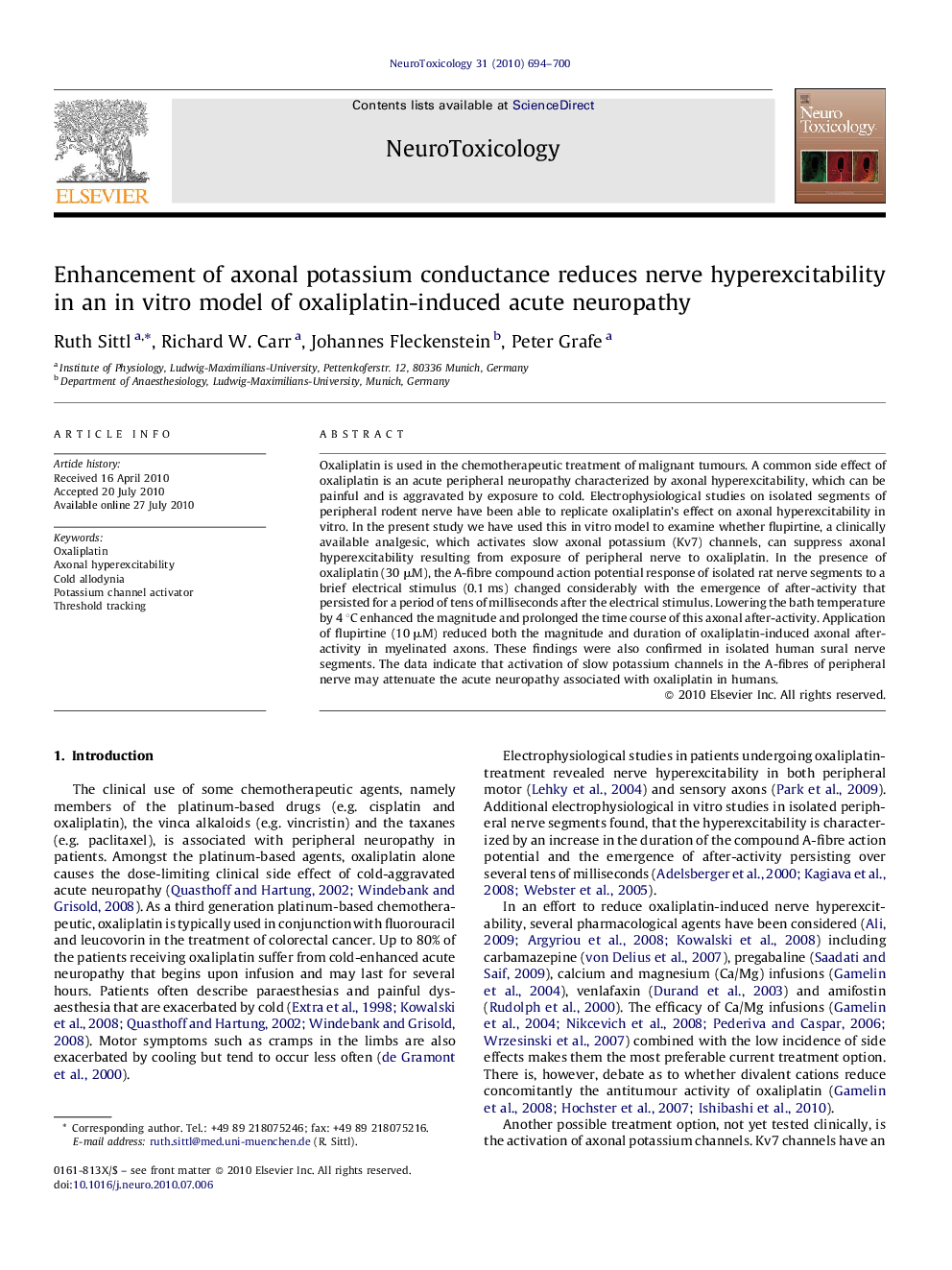| Article ID | Journal | Published Year | Pages | File Type |
|---|---|---|---|---|
| 2590563 | NeuroToxicology | 2010 | 7 Pages |
Oxaliplatin is used in the chemotherapeutic treatment of malignant tumours. A common side effect of oxaliplatin is an acute peripheral neuropathy characterized by axonal hyperexcitability, which can be painful and is aggravated by exposure to cold. Electrophysiological studies on isolated segments of peripheral rodent nerve have been able to replicate oxaliplatin's effect on axonal hyperexcitability in vitro. In the present study we have used this in vitro model to examine whether flupirtine, a clinically available analgesic, which activates slow axonal potassium (Kv7) channels, can suppress axonal hyperexcitability resulting from exposure of peripheral nerve to oxaliplatin. In the presence of oxaliplatin (30 μM), the A-fibre compound action potential response of isolated rat nerve segments to a brief electrical stimulus (0.1 ms) changed considerably with the emergence of after-activity that persisted for a period of tens of milliseconds after the electrical stimulus. Lowering the bath temperature by 4 °C enhanced the magnitude and prolonged the time course of this axonal after-activity. Application of flupirtine (10 μM) reduced both the magnitude and duration of oxaliplatin-induced axonal after-activity in myelinated axons. These findings were also confirmed in isolated human sural nerve segments. The data indicate that activation of slow potassium channels in the A-fibres of peripheral nerve may attenuate the acute neuropathy associated with oxaliplatin in humans.
